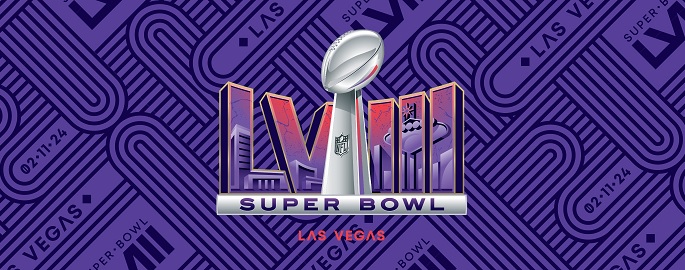This year's Super Bowl drew in viewership of nearly 124 million viewers and made history as the most-watched live broadcast event since the 1969 moon landing. To support this spike in viewership, streaming companies like YouTube TV, Hulu and Paramount+ began preparing their IT infrastructure months in advance to ensure an exceptional viewer experience without outages or major interruptions.

New Relic conducted an omnibus survey of more than 1,000 US adults to understand the importance of a seamless viewing experience and the impact of outages during major streaming events such as the Super Bowl.
Here are three key takeaways from the survey results:
1. Outages Lead to Lost Viewers
With customers paying a monthly fee to stream live events via platforms, it's no surprise they expect an uninterrupted, seamless viewing experience. Viewers want to get the most out of their money while streaming NFL games and other live events and do not hesitate to switch providers due to interruptions during the stream. In fact, 58% of survey respondents said they would switch to a different provider to continue watching live events in case of interruptions, with Gen Z (64%) and millennials (63%) being the most likely to switch streaming services.
2. Every Minute Counts During an Outage
When an outage occurs, quick resolutions are critical for streaming platforms to retain viewers. Successfully broadcasting live events means capturing every second of the action, so an outage on a streaming service means fans could be missing game-changing moments. For streaming service customers, the timer to switch providers begins the second the stream experiences an outage. Nearly half (48%) of survey respondents said they would wait less than 10 minutes before switching providers, with baby boomers being the most likely at 55%, followed by Gen X at 49%.
3. Customers Are Quick to Cancel Subscriptions
Beyond simply switching platforms during a live event, consumers have more streaming services to choose from than ever before, which puts streamers in a tough spot: They know an outage could cause a poor customer experience and, consequently, subscription cancellations. A blip during an event like the Super Bowl could impact the providers' customers and their bottom lines.
The majority (63%) of survey respondents said they would consider canceling a streaming service due to an outage during the Super Bowl or another live event, with millennials being the most likely to cancel at 70%. Moreover, 40% of respondents said they would wait less than 30 minutes to cancel their subscription to a streaming service during an outage.
If this year's record-breaking Super Bowl viewership taught us one thing, it's that every minute matters when streaming high-volume live events. Amid more competition and strong consumer demand for uninterrupted viewing experiences, streaming companies will increasingly have to ensure their applications are well-equipped to seamlessly broadcast major live events such as the Super Bowl, the NCAA's March Madness, or the Olympic Games.
The Latest
Broad proliferation of cloud infrastructure combined with continued support for remote workers is driving increased complexity and visibility challenges for network operations teams, according to new research conducted by Dimensional Research and sponsored by Broadcom ...
New research from ServiceNow and ThoughtLab reveals that less than 30% of banks feel their transformation efforts are meeting evolving customer digital needs. Additionally, 52% say they must revamp their strategy to counter competition from outside the sector. Adapting to these challenges isn't just about staying competitive — it's about staying in business ...
Leaders in the financial services sector are bullish on AI, with 95% of business and IT decision makers saying that AI is a top C-Suite priority, and 96% of respondents believing it provides their business a competitive advantage, according to Riverbed's Global AI and Digital Experience Survey ...
SLOs have long been a staple for DevOps teams to monitor the health of their applications and infrastructure ... Now, as digital trends have shifted, more and more teams are looking to adapt this model for the mobile environment. This, however, is not without its challenges ...
Modernizing IT infrastructure has become essential for organizations striving to remain competitive. This modernization extends beyond merely upgrading hardware or software; it involves strategically leveraging new technologies like AI and cloud computing to enhance operational efficiency, increase data accessibility, and improve the end-user experience ...
AI sure grew fast in popularity, but are AI apps any good? ... If companies are going to keep integrating AI applications into their tech stack at the rate they are, then they need to be aware of AI's limitations. More importantly, they need to evolve their testing regiment ...
If you were lucky, you found out about the massive CrowdStrike/Microsoft outage last July by reading about it over coffee. Those less fortunate were awoken hours earlier by frantic calls from work ... Whether you were directly affected or not, there's an important lesson: all organizations should be conducting in-depth reviews of testing and change management ...
In MEAN TIME TO INSIGHT Episode 11, Shamus McGillicuddy, VP of Research, Network Infrastructure and Operations, at EMA discusses Secure Access Service Edge (SASE) ...
On average, only 48% of digital initiatives enterprise-wide meet or exceed their business outcome targets according to Gartner's annual global survey of CIOs and technology executives ...
Artificial intelligence (AI) is rapidly reshaping industries around the world. From optimizing business processes to unlocking new levels of innovation, AI is a critical driver of success for modern enterprises. As a result, business leaders — from DevOps engineers to CTOs — are under pressure to incorporate AI into their workflows to stay competitive. But the question isn't whether AI should be adopted — it's how ...







